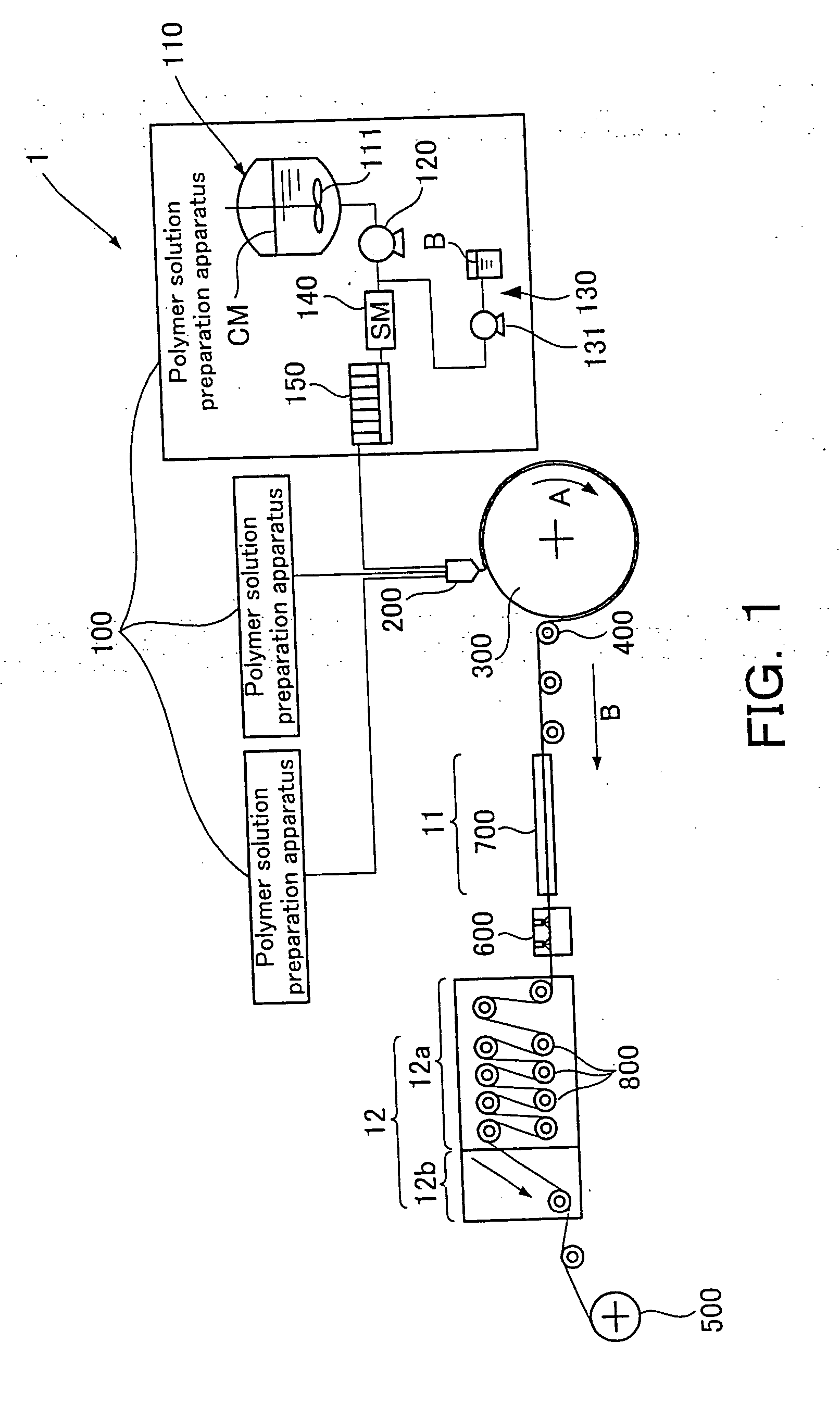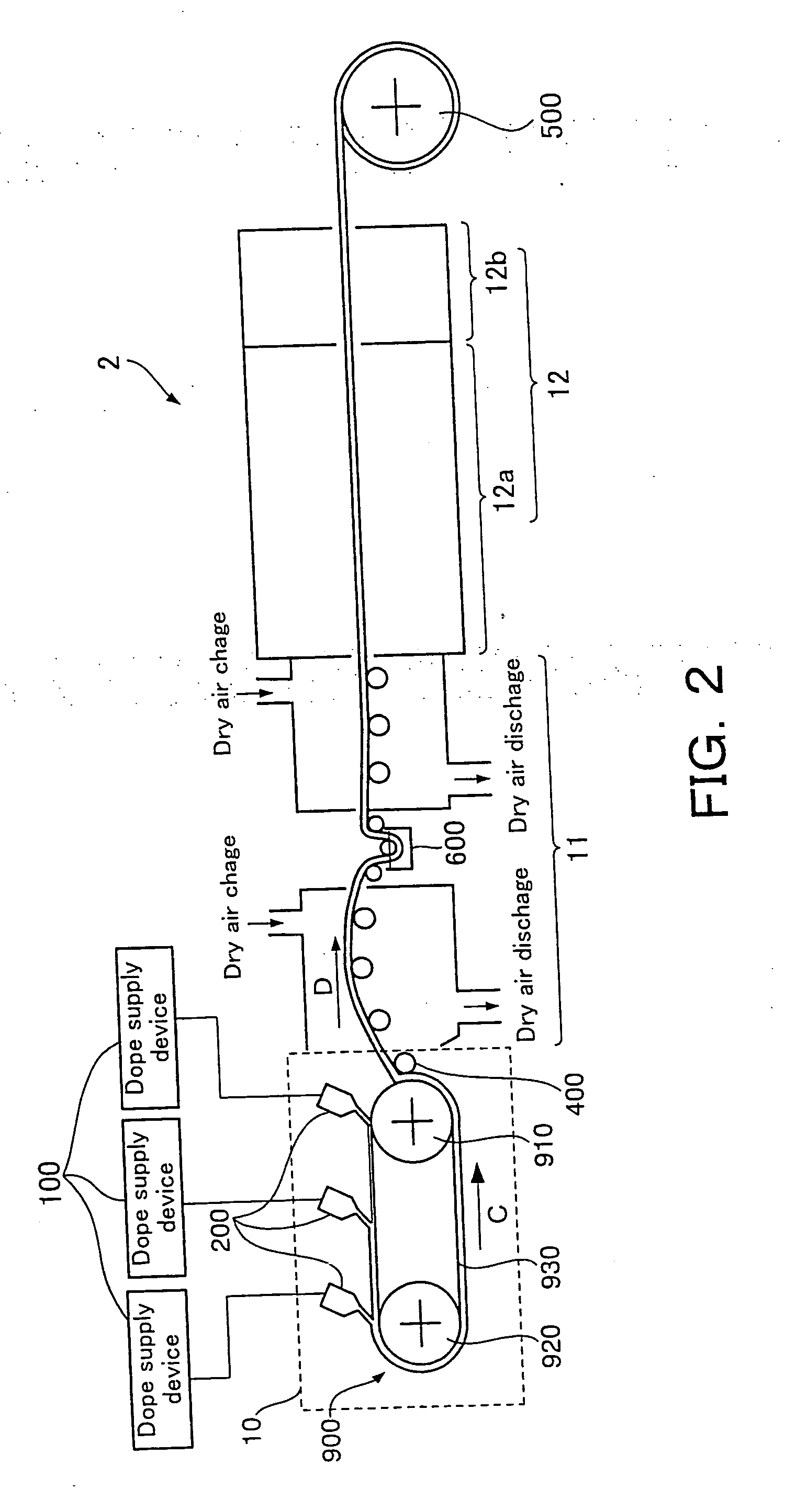Production method of cellulose film, cellulose film, protective film for polarizing plate, optical functional film, polarizing plate, and liquid crystal display
a production method and technology of cellulose film, applied in the direction of polarizing elements, instruments, membranes, etc., can solve the problems of reducing degrading the color of the film, and adverse effects on the dimensional stability of the film, so as to reduce the residual amount of organic solvent in the film
- Summary
- Abstract
- Description
- Claims
- Application Information
AI Technical Summary
Benefits of technology
Problems solved by technology
Method used
Image
Examples
example 1
(Example 1)
[0059] Dichloromethane: 79.6 wt % [0060] Methanol: 19.9 wt % [0061] n-Butanol: 0.5 wt %
[0062] Additionally, in examples 2 to 4, the TAC films were produced under the same conditions as those in example 1, except that the conditions under which the filmy object discharged from the soft film drying zone 11 was once swollen, was changed to each condition specified below. In other words, the composition ratios of the polymer solutions were the same as those in example 1.
example 3
(Example 3)
Spray of Water Vapor at 120° C.
(Example 4)
Rinsing with Water by Watersoaking.
[0063] Furthermore, in example 5, the TAC film was produced under the same conditions (the composition ratios of the polymer solution, etc.) as those in example 1, except that the filmy object discharged from the soft film drying zone 11 was not once swollen.
PUM
| Property | Measurement | Unit |
|---|---|---|
| boiling point | aaaaa | aaaaa |
| boiling point | aaaaa | aaaaa |
| boiling point | aaaaa | aaaaa |
Abstract
Description
Claims
Application Information
 Login to View More
Login to View More - R&D
- Intellectual Property
- Life Sciences
- Materials
- Tech Scout
- Unparalleled Data Quality
- Higher Quality Content
- 60% Fewer Hallucinations
Browse by: Latest US Patents, China's latest patents, Technical Efficacy Thesaurus, Application Domain, Technology Topic, Popular Technical Reports.
© 2025 PatSnap. All rights reserved.Legal|Privacy policy|Modern Slavery Act Transparency Statement|Sitemap|About US| Contact US: help@patsnap.com


